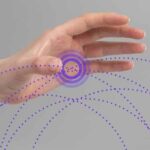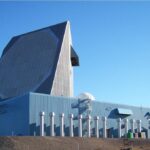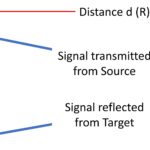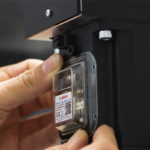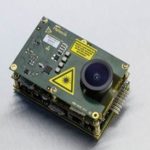By Charles Pao, Senior Marketing Specialist at CEVA
Mobile phones and tablets are getting more powerful, but if you’re serious about doing work (remotely), the dedicated work laptop still reigns supreme. Privacy and productivity have become increasingly important in this new paradigm of working anywhere. To help with both in the age of mobile computing, human presence detection technologies have moved to the forefront.
Instant productivity and security
Imagine you find a nice nook in the corner of the coffee shop where the aroma of the beans hits just right, and it’s cozier than the rest. As you approach your nook of the modern-day oasis, the positive feelings inspire you with a wonderfully creative thought. You sit down to type it up, but while logging onto the computer, your brain gets distracted by the login screen, and your brilliant thought fades away. This unfortunate situation can be avoided with your computer automatically recognizing you and logging you in immediately so you can open your text editor and jot down your idea. And that’s exactly what human presence detection can do.
Now, I’m aware I’m being a bit facetious with my example here, but the point stands. Logging in the moment you’re in front of your laptop helps you get to what you need to. Faster. This is similar to how an individual hotkey press isn’t a huge deal, but you notice you can work more efficiently over time. Huma presence detection is like having a hotkey for logging in.
Security is arguably more important than productivity because how could you do work if your property or data was compromised? Continuing with the coffee house example, when you hear your name called and step away from your laptop to pick up your coffee, human presence detection determines you’re not there and can lock your PC immediately to keep your data secure. It will unlock the moment you return, with no extra button presses or wiggling of the mouse. An instant lock and unlock keeps data secure and feels like you never left your computer.
Say you’re working on a novel (or, I don’t know… a blog article about human presence detection), and someone walks behind your laptop to read over your shoulder. Human presence detection sensors can detect that someone else is around and alert you or even blur the screen to avoid unwanted eyes from stealing your ideas.
These sensors can also keep track of where your face is looking, keeping tabs on your eye health (by letting you know when you’ve looked at the computer for too long). Or they can be used for gesture control to give you some basic slide control from afar. These are just some of the capabilities that are possible with some creative thinking.
Sensing Presence
Three prominent technologies for human presence detection are listed and described below. One commonality between these sensors is that they all get their information by something hitting their respective receivers.
Time of Flight (ToF) Sensors:
These sensors emit a signal that reflects off a surface and measure the time it takes to return to the sensor. This can be done with different signals, including lasers (LIDAR), infrared (IR), and ultrasound. Time-of-flight sensors use an array of sensing pixels to determine relative distances from the object, creating a range map. Time of flight sensors are the most prevalent due to their low cost and smaller size.
Low power camera:
Instead of emitting their own signal, low-power cameras capture photons (from light) on a grid of sensors that determine color and brightness. The source of photons is whatever source of light already present in the space, whether it’s an LED, fluorescent, or natural sunlight. With a camera, you get more readily appreciable information to a human but are dependent on lighting conditions.
Ultra-wideband (UWB) or mmWave:
Ultra-wideband operates similarly to radar, where radar pulses are sent and their reflections measured. The main difference here is that UWB signals are very low energy, designed specifically for short-range. Unlike the camera, it can operate in any light condition. UWB sensors have high sensitivity as well, even being able to detect heart rate. But these features come at a higher price (literally) than the other sensors.
Each of the prominent technologies has distinct benefits and drawbacks, and determining which is best for your human presence detection application requires a strong understanding of sensors. In addition, a dedicated sensor hub that utilizes sensor fusion to turn raw sensor data into meaningful context will help deliver the best user experience. The challenge is how to achieve this while meeting productivity, security, and power requirements, which is why it’s crucial to have a suitable signal processing IP in place.
CEVA has over 15 years in developing sensors and sensor fusion solutions. To find out more about its HPD capabilities, visit ceva-dsp.com
Charles Pao started at CEVA Hillcrest Labs after graduating from Johns Hopkins University with a Master of Science degree in electrical engineering. He started work in software development, creating a black box system for evaluating motion characteristics. Charles started producing demo and product videos for Hillcrest Labs with a passion for media and communications. This passion led to an official position transfer into Marketing. Currently, he is Hillcrest’s first point of contact for information and support and manages their marketing efforts. He’s also held various account and project management roles. Charles also earned Bachelor of Science degrees in electrical engineering and computer engineering from Johns Hopkins University.


